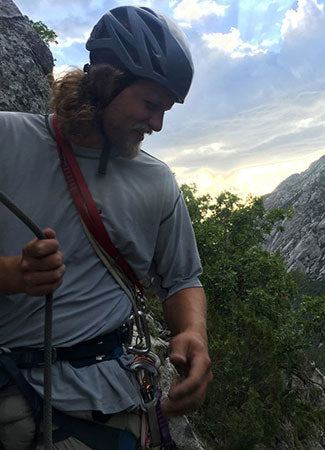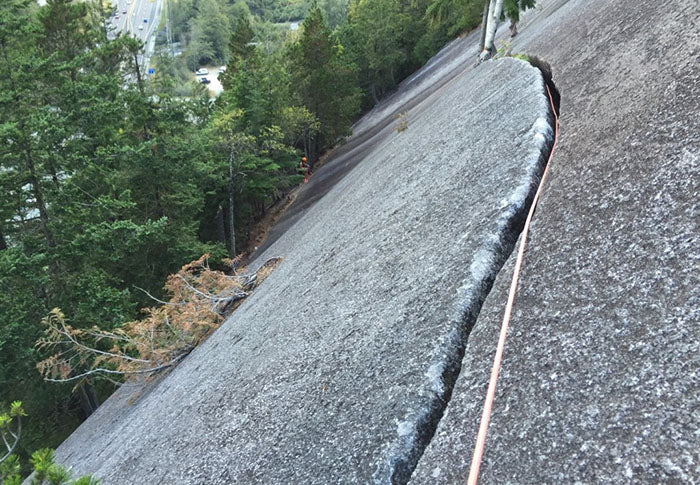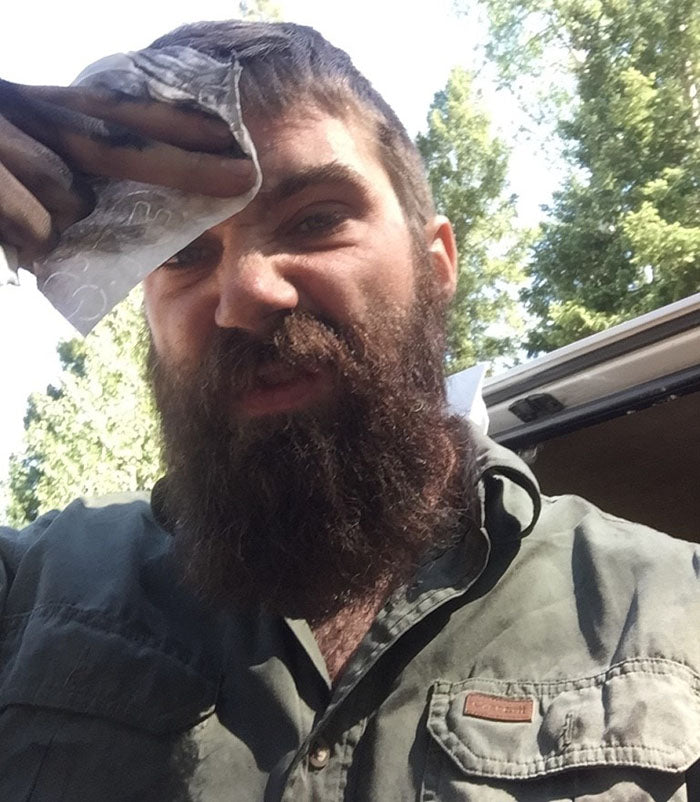
Climbing Ropes: Maintenance and care
 Long run outs on slab or pulling a rope over sharp edges can cause abrasion, but climbing ropes are tough! I inspect my ropes by feeling the core and looking for gaps in the sheath every few climbing days or any time they’re exposed to a rough pitch.
Climbing ropes are incredibly tough and can withstand all sorts of harsh conditions, but it’s still important to maintain them to ensure a long life. Ropes aren’t cheap, and the more days you get out of them the more money you’ll be able to put towards gas for the next road trip.
The best offense is a good defense! Here are some key components to preventing damage to your rope:
Long run outs on slab or pulling a rope over sharp edges can cause abrasion, but climbing ropes are tough! I inspect my ropes by feeling the core and looking for gaps in the sheath every few climbing days or any time they’re exposed to a rough pitch.
Climbing ropes are incredibly tough and can withstand all sorts of harsh conditions, but it’s still important to maintain them to ensure a long life. Ropes aren’t cheap, and the more days you get out of them the more money you’ll be able to put towards gas for the next road trip.
The best offense is a good defense! Here are some key components to preventing damage to your rope:
1) As soon as you get to the climb, put down a ground cloth. There are dozens of specifically-made options on the market, but an old painter’s tarp, a tent’s ground cloth, or even just your backpacks and extra clothes could be enough to keep your rope out of the dirt. Climbing ropes often come with a dry treatment to their sheath, with help protect the sheath and core from all sorts of debris.
2) When climbing, think about where your rope is trailing behind you and keep it away from sharp edges and possible rock fall. Be especially mindful of how the rope will react if you take a fall. Extend gear that pulls the rope too far out of line with your direction of travel, or if the rope is pulled over an edge. If necessary it’s also possible to pad sharp edges with a few layers of tape, just make sure you clean up after yourselves.
3) Keep your rope away from chemicals. There are dozens of studies out there arguing that certain chemicals are or are not bad for nylon climbing gear (ropes, harnesses, slings, etc...), but the easy take away is this: keep your nylon away from corrosive chemicals. The most likely to damage your gear is Deet bug spray, the most likely to be discussed but not significantly damage your gear is Sharpie ink on the midpoint mark of the rope. But why screw around with any of it?
4) If you’re taking lots of falls, switch ends. Repetitive, similar forces can be hard on a rope, so it’s nice to switch ends and give each section a little rest. It’s also a good habit to make small adjustments to knots when you switch between climbers since bends in the rope increase the wear on that specific area.
Maintenance is also a key component of ensuring your rope has a long, safe career. If little bits of dust and grit get into your rope, they can wear down the fibers and dramatically decrease your ropes function. Fight detritus!
 I made this placement Little Cottonwood canyon. If I’d clipped straight into the carabiner with my rope and fallen higher up, the rope would have been pulled tight against the edge. By using a sling to extend the placement I was able to avoid any serious contact with the edge.
I made this placement Little Cottonwood canyon. If I’d clipped straight into the carabiner with my rope and fallen higher up, the rope would have been pulled tight against the edge. By using a sling to extend the placement I was able to avoid any serious contact with the edge.
1) Wipe the dust off at the end of the day. Rope brushes are available for a few bucks from several manufacturers, and one can easily be manufactured with a couple scrub brushes and some rubber bands. Even flaking the rope through your hand once more on a good clean surface can remove a lot of crud.
2) Wash your rope once in a while. Manufacturers give specific recommendations for soaps that work best with their nylons, dyes, and dry treatments. The general premise is this: use a very gentile or rope-specific soap, soak it, rinse it off well, and let it dry without heat or sunlight. The idea is not just to get the crud off the rope’s surface, but out of its fibers, so go after it.
3) Inspect your rope for “core shots,” or damage to the core of the rope, which may or may not be visible from the outside. Sheaths sometimes withstand the pinching or cutting forces that sever the core, so climbers should regularly go over their ropes feeling for internal damage. If squeezing the rope reveals a gap in the core, or if the rope can be easily bent over on itself as if there were a hinge inside, it should be retired. Same goes for any damage where the core is visible through the sheath. If one of these issues occurs within a few meters of the end of the rope, that section can sometimes be cut out.
4) Make sure you store your rope properly. It should never be put away wet or hung over a narrow point, like a nail. Hanging is fine on something like a dowel or PVC pipe at least ¾in in diameter and can actually help get rid of residual moisture. Keep the rope out of sunlight whenever possible, as UV rays do have a negative impact on nylon.
A special consideration for poison oak: If you’ve ever climbed at Broughton’s Bluff here in Portland you’ve probably encountered poison oak, and it can be incredibly hard to get off gear. The oils are very similar to engine grease but are invisible to the human eye. The keys to beating poison oak on your gear are to a) scrub three times as much as you think you need to and b) clean everything you have so the oils don’t keep getting transferred back and forth between your equipment. I’ve used gentle dish soaps and lots of elbow grease to clean poison oak oils off my rope and other gear, to great success.
 Me after repairing a leaky fuel hose on the roadside somewhere between Indian Creek and Telluride last summer. Remember that poison oak oils are like grease, you’ve gotta scrub scrub scrub!
Thanks so much for reading this, I hope it’s been helpful! If you’re in the Portland area swing by next adventure to check out our wide selection of ropes and other climbing gear, or just to say hi! If you have any questions or feedback for me I’m available at hanrahan.matt@gmail.com.
Read all of Matt's Dirtbag Adventures!
Me after repairing a leaky fuel hose on the roadside somewhere between Indian Creek and Telluride last summer. Remember that poison oak oils are like grease, you’ve gotta scrub scrub scrub!
Thanks so much for reading this, I hope it’s been helpful! If you’re in the Portland area swing by next adventure to check out our wide selection of ropes and other climbing gear, or just to say hi! If you have any questions or feedback for me I’m available at hanrahan.matt@gmail.com.
Read all of Matt's Dirtbag Adventures!

